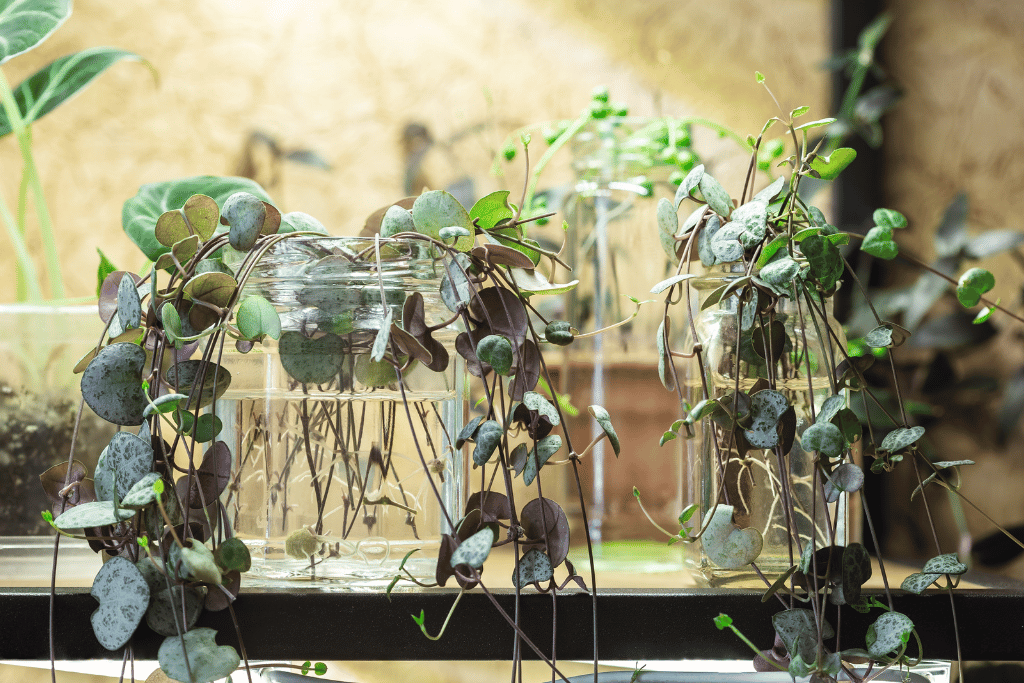
The glossy green leaves and the attractive white flowers of a peace lily (Spathiphyllum) might be the reason why you chose to adorn your house with one. However, it is not a pretty sight when, out of nowhere, you start noticing yellow leaves on your dear plant. If you’re a new gardener, you might start jumping to conclusions or worrying more than you should. More often than not, the causes of your peace lily leaves turning yellow are easily detectable. However, there are a few of them.
Some causes relate to improper growing environments, while others relate to aging, diseases, or pests. However, to discuss these causes at length and understand how to spot them, we must dig deeper. Therefore, in this post, I’ll review some of the most common reasons your peace lily leaves might turn yellow.
10 Reasons for Peace Lilies Leaves Turning Yellow
1. Overwatering
I’ll begin with the most obvious reason. Much like many other houseplants, the leaves of a peace lily can turn yellow if it experiences overwatering. However, to rule out other causes, there are a few other signs to look out for.
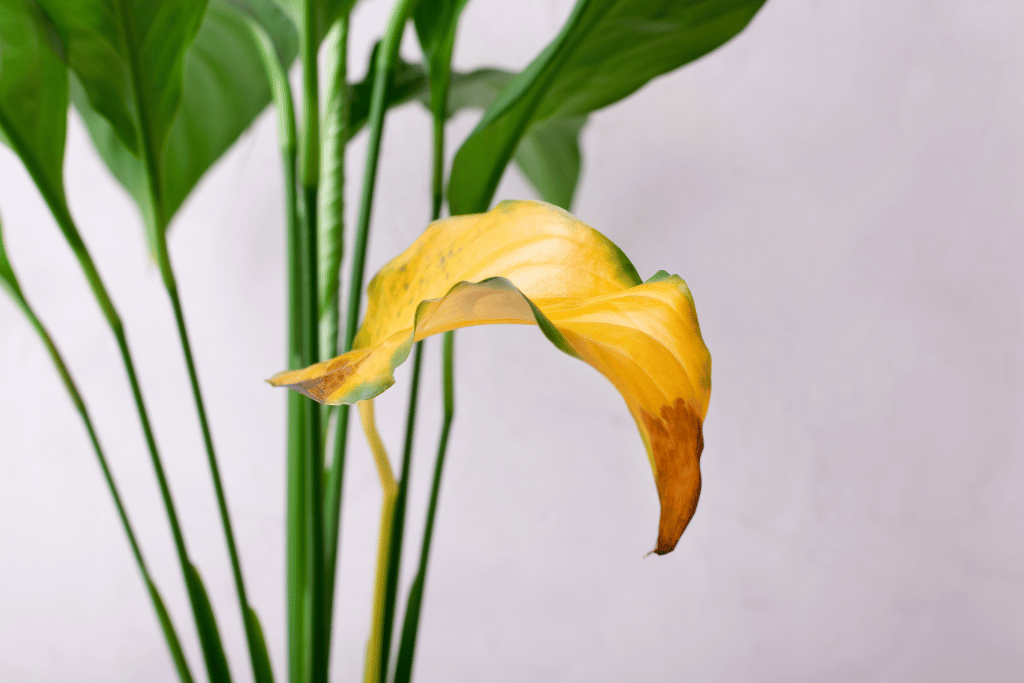
An overwatered peace lily will have droopy and yellowing leaves with tips turning brown. An overwatered plant will also experience fungal diseases and root rot. The key thing to remember is to only water your peace lily plant when the top two inches of the soil are dry.
If the soil stays wet and soggy for a long time, the plant will start showing signs of overwatering, including yellow leaves.
2. Underwatering
Aroids, like peace lilies, are known for their preference for moist soil. Even though they don’t like to be waterlogged, they don’t like to experience a dry spell either. Yellowing leaves indicate that your peace lily plant may not be getting enough water.
To make sure that it is indeed the problem, check the soil. If it feels wet deeper than two inches, or if it is not sticking to the edges of the pot, you may be underwatering your plant. To simplify things, stick to watering your peace lily plant only when the top two inches of soil feel dry.
3. Inappropriate Sunlight
A key environmental factor that can result in yellow leaves on your peace lily plant is inappropriate sunlight. Indirect with partial shade is ideal for this plant. It resembles the plant’s natural habitat, where it grows under the shade of taller plants.
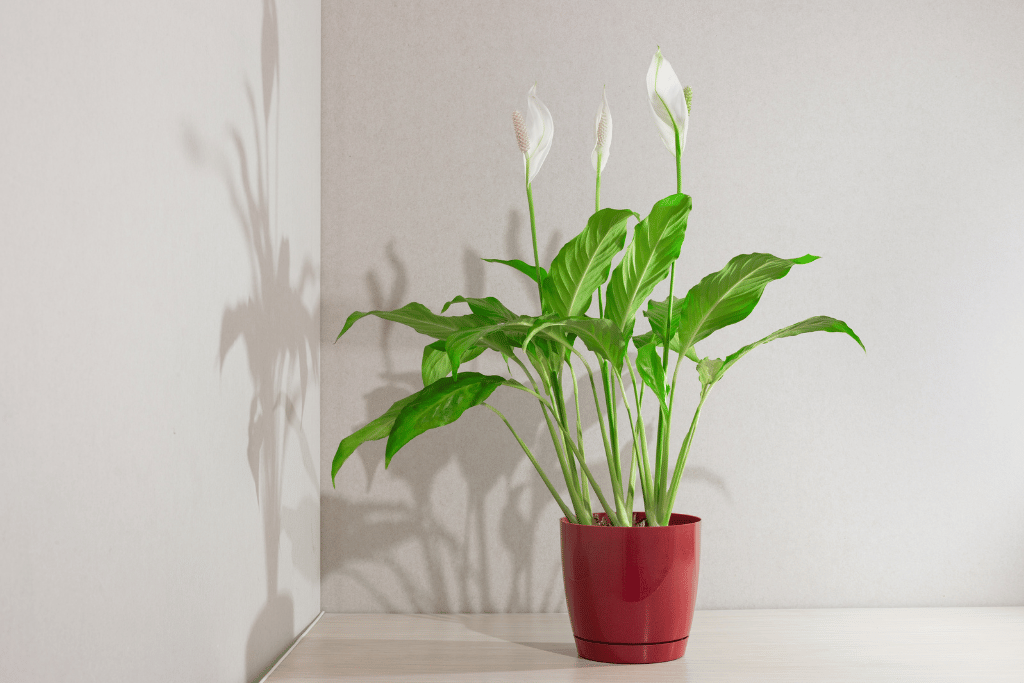
Therefore, if you expose your plant to a lot of direct sunlight, you will likely experience yellow leaves. You can further ensure if it is due to sunlight by looking for brown streaks or spots on the leaves.
Conversely, if your plant is always in the shade and not getting enough indirect sunlight, it can cause yellow leaves too. Lack of sunlight will prevent the plant from performing photosynthesis, resulting in signs of weakness like yellow leaves.
To avoid this, place your plant in east or north-facing rooms if possible. If you’re a new owner, monitor the sunlight exposure throughout the day and see if the plant is exposed to scorching direct sunlight.
4. Inappropriate Temperature
The ideal temperature for a peace lily plant ranges from 55 to 85 degrees Fahrenheit. Any fluctuations from the upper or lower limit can cause temperature stress, which can result in yellow leaves.
To keep the temperature stable throughout the day, place your plant in areas protected from hot or cold drafts. Areas close to windows, radiators, or air vents are not suitable. Similarly, placing your peace lily close to doors can also be detrimental if it is cold outside.
5. Inadequate Humidity
Peace lilies prefer a tropical and humid climate. The ideal environment has at least 60% humidity, which helps the plant thrive. Failure to maintain this humidity can also cause yellow leaves in your beloved peace lily plant. However, as you have seen, there may be many reasons for yellowing leaves.
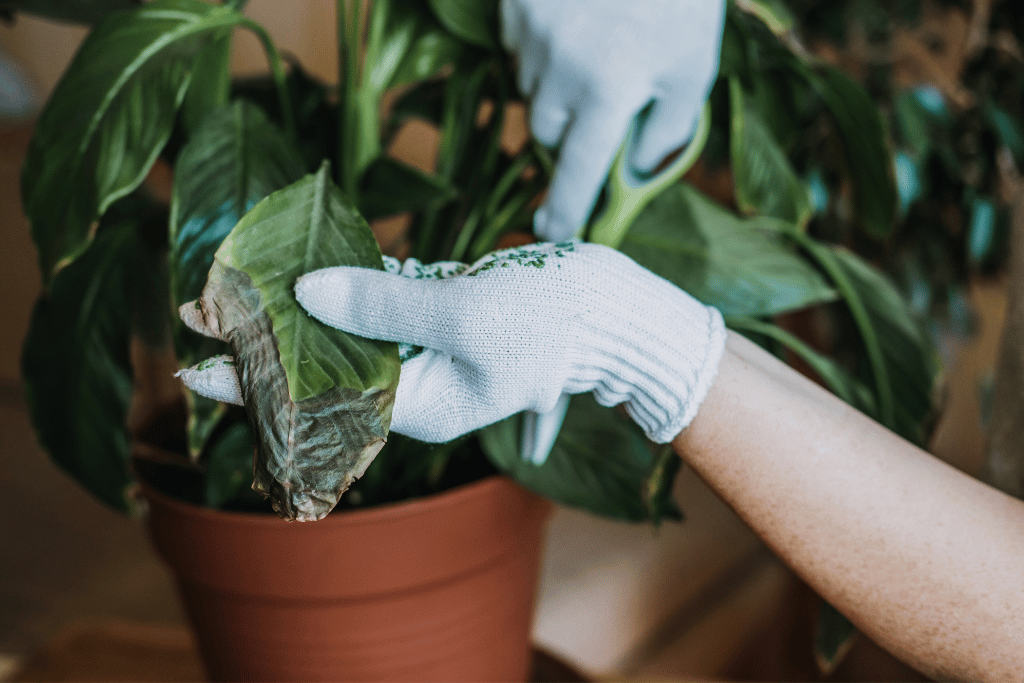
To ensure that it is because of low humidity, check the tips of the leaves. If they’re brown, your plant is either experiencing low humidity or underwatering. You can address this issue by placing the plant in a pebble tray or using a humidifier. Misting is also a great way to keep humidity at optimum levels.
6. Poor Water Quality
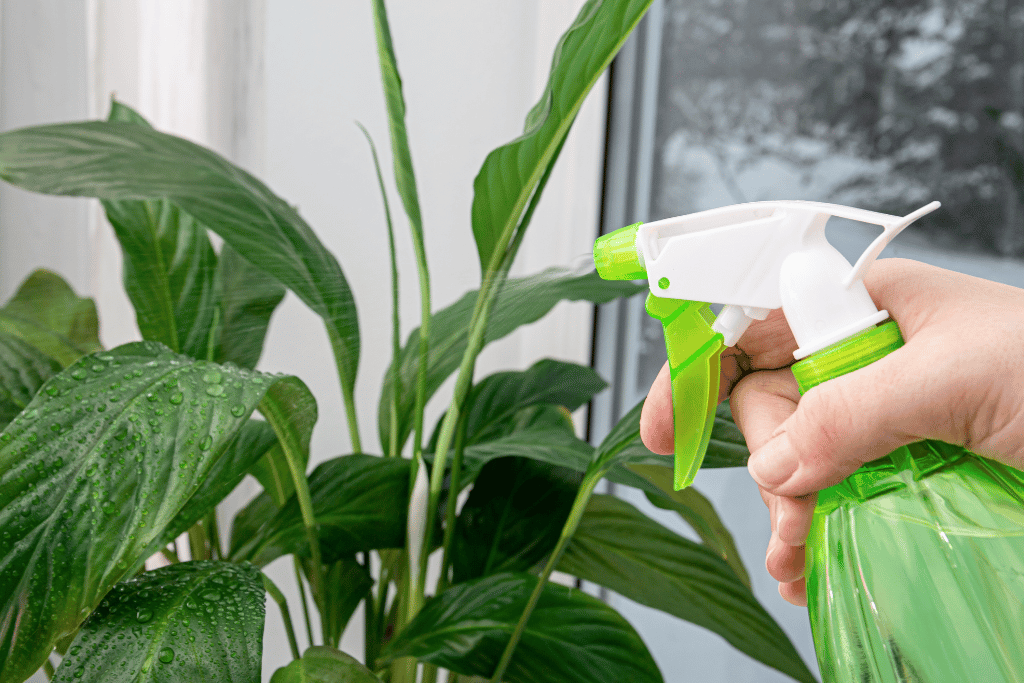
Poor water quality can also result in yellowing leaves. For example, if you use ordinary tap water, the chemicals like chlorine and fluoride can adversely affect your plant. You can also check the soil for the presence of white dots. These are salt buildups that occur when you use poor-quality water. You can use dechlorinated or filtered water to prevent this from happening.
7. Insufficient Nutrients
Yellow leaves may also be a sign of nutrient deficiency. The most common cause is a lack of nitrogen. You can use a diluted houseplant fertilizer every 1-2 months to address this deficiency. Another way is to refresh the soil with a fresh mix top-up every once in a while.
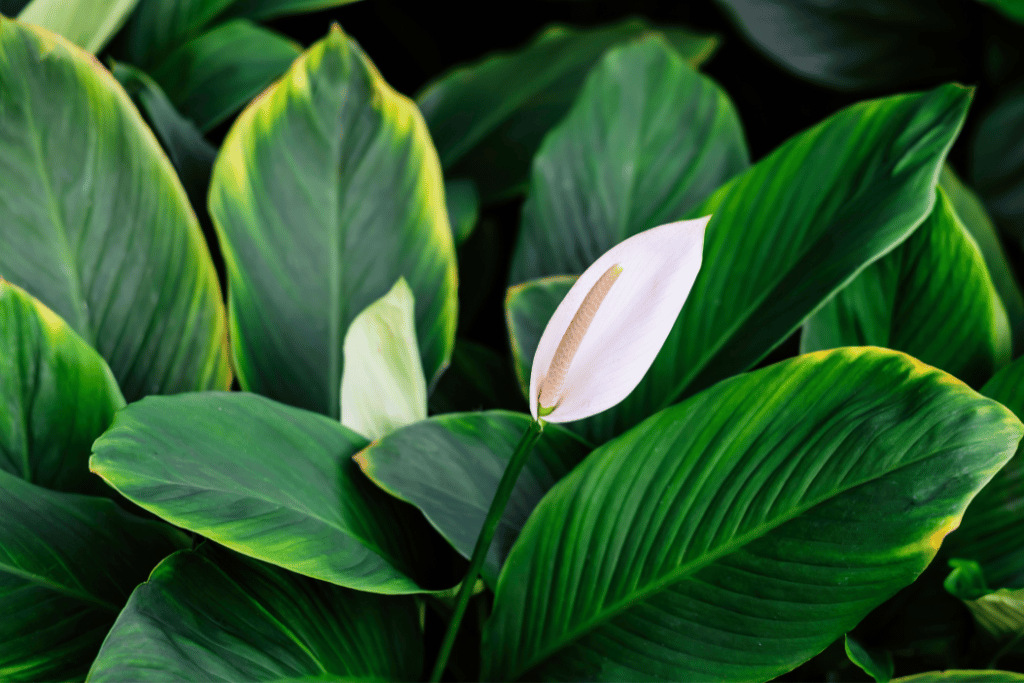
8. Aging
You shouldn’t start worrying about peace lilies leaves turning yellow until there are more than a few of them. Why? It is normal for a leaf to turn yellow as it ages, and you’ll find some leaves turning yellow at any given time. It is part of the natural growth process and shouldn’t be a cause of concern.

If you notice one or two leaves drooping and turning yellow, remove them with clean scissors. Cut as close as possible to the base where the leaf meets the main plant. Lastly, if dead leaves fall off and onto the soil, remove them from the plant as they can be conducive to pests.
9. Repotting Shock
Repotting shock is common in peace lily plants repotted or transplanted recently. It simply indicates that the plant needs some time to adapt to its new growing environment. A repotting shock may result in some of the leaves to droop or turn yellow.
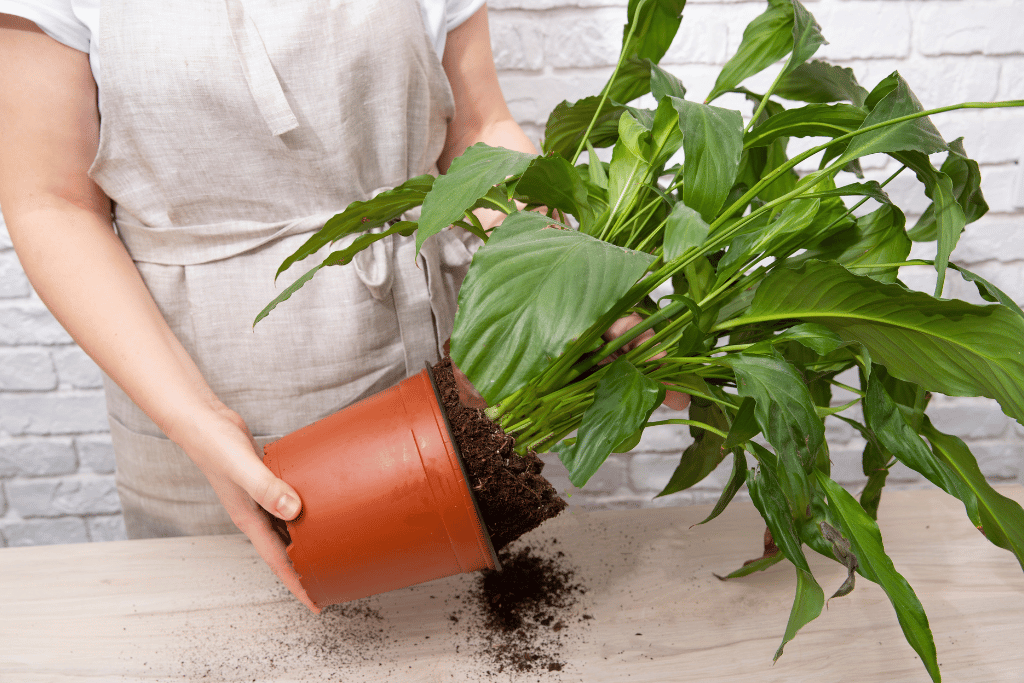
To rule out other causes, check to see if the tips of the leaves are brown. If they aren’t, and if you have recently repotted the plant, the yellow leaves are most likely from shock. To ease the process of acclimatization, you should place the plant in partial shade.
Lastly, you should avoid repotting the peace lily plants that are not root bound. The plant is root bound if the roots are coming out of the drainage holes. At this point, the plant needs to be repotted.
However, since the peace lily grows slowly, you only need to repot it once a year. When you do repot, avoid fertilizing the plant until it adapts and becomes relatively healthy.
10. Pests or Diseases
If you’ve checked everything else and found no reason for your peace lily leaves to turn yellow, here’s what it may be suffering from. Peace lilies can experience an infestation of pests like mealybugs, scale insects, and fungus gnats. Furthermore, diseases like root rot can also lead your plant to develop yellow leaves.
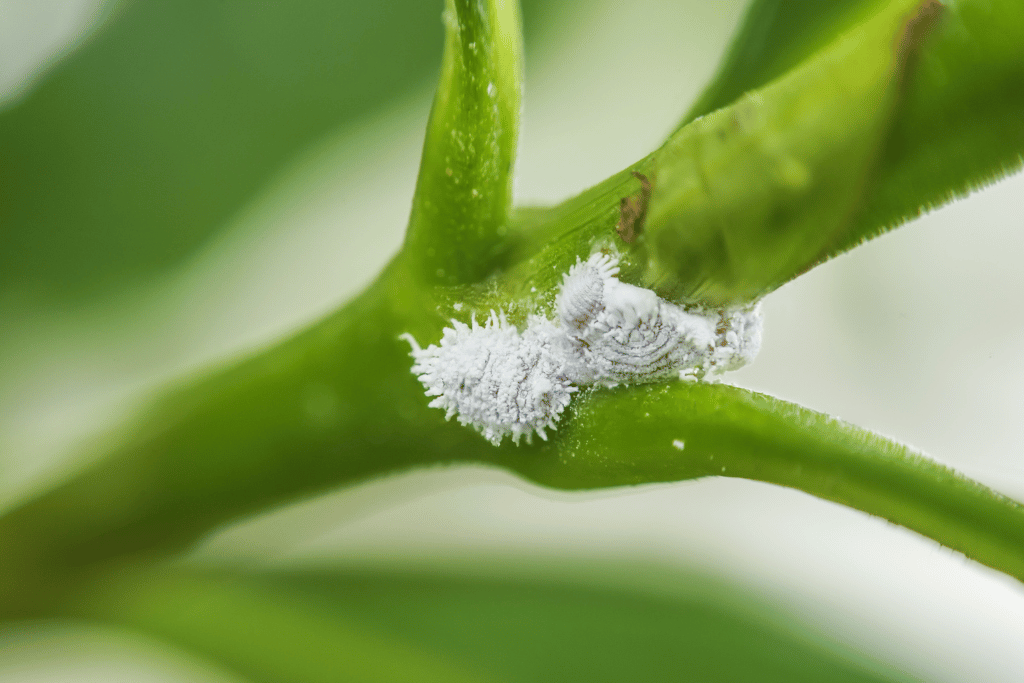
A good-quality insecticidal soap or neem oil will eliminate pests like mealybugs. You can use sticky traps to control fungus gnats. As for root rot, you should check whether the soil drains well. Root rot occurs when soil retains too much water, so change the potting mix and fix drainage holes.
Final Words
Most causes for your peace lily leaves turning yellow relate to an inadequate and inappropriate growing environment. If you’re already caring for your peace lily plant as you should, you’re unlikely to be surprised by the yellow leaves on your beautiful plant.
However, if you do come across some, don’t panic. This guide will point out the exact cause of yellowing leaves so that you can take care of your plant and let it add color to your home.


